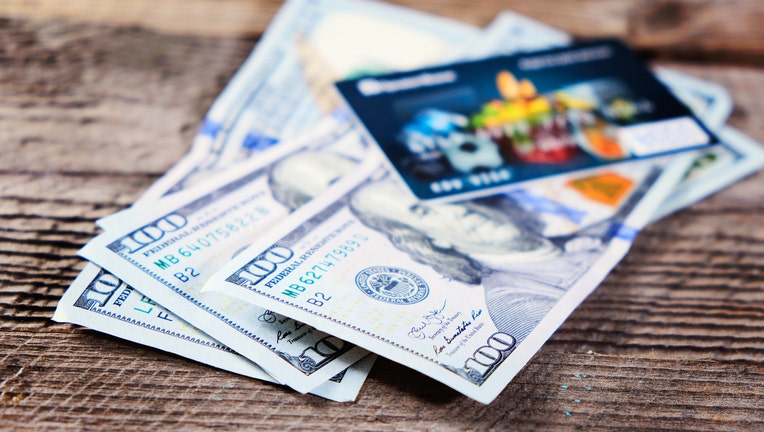How to pay off credit card debt during coronavirus — 4 ways that work

Nearly half of Americans now report having credit card debt amid the coronavirus pandemic. Here’s how to start paying it down.
Credit card debt during coronavirus has spiked as more Americans search for ways to cope with reduced incomes and unemployment.
If you're finding it difficult to pay down debt as a result of the virus, keep reading. Below are a few relief options to help you pay off your debt at affordable interest rates, as well as tips for how to stay on top of your monthly payments. Armed with this knowledge, you should be able to get a handle on your debt relatively quickly.
Personal loan
One way to make paying off your debt more manageable is to take out a debt consolidation loan. Similar to debt refinancing, a debt consolidation loan is a personal loan that lets you combine all of your existing credit card balances into one monthly payment.
One benefit of consolidating your debt with a personal loan is that, depending on your credit score, you’ll likely be able to find a loan that offers an interest rate that is lower than what you’re currently paying on your cards. Additionally, the interest rates on personal loans are often fixed, so they don’t fluctuate over time the same way the interest rate on your card might.
To check what current rates you qualify for, plug your desired loan amount into Credible's free personal finance tool, and get estimates within minutes. You can also see your potential savings (your bank account will thank you).
EVERYTHING YOU NEED TO KNOW ABOUT GETTING A PERSONAL LOAN
If you do decide to go this route, your first step should be to compare your personal loan options. Ideally, you should look for a loan that has a lower interest rate than the one you’re paying now. When your goal is to keep your payments as low as possible, you should also look for personal loans with long repayment plans.
Once you’ve taken out a personal loan, the next step is to focus on making sure you continue to pay down debt. With that in mind, here are some tips for staying on top of your loan payments and ultimately lowering the overall amount you owe:
Make your payment on time every month: Payment history accounts for 35 percent of your credit score. Continually making your payments on time is the best way to ensure that your score stays in good shape.
Put any windfalls to good use: When you can, pay more than your monthly payment. It will help you pay off your loan faster and you’ll save on interest charges long-term.
Hide your cards: The last thing you’ll want to do once you’ve paid off credit cards with a loan is to rack up new balances. Do your best to avoid using your cards until you’ve paid off your debt entirely.
Balance transfer credit cards
If you don’t like the idea of taking out a personal loan, exploring balance transfer credit cards is another viable option. As the name suggests, balance transfer cards allow you to transfer all of your existing balances on to a single card. Many of these cards also offer an introductory 0% APR period, which gives you the chance to pay down your debt interest-free for a set period of time.
If the idea of moving your outstanding balance to a new card and paying it off interest-free appeals to you, then this is the card for you — and Credible can help you find the best deal. You can compare balance transfer credit cards via Credible's online marketplace and find the card with the perks you're looking for.
USING CORONAVIRUS STIMULUS CHECKS TO PAY OFF CREDIT CARDS? WHAT YOU NEED TO DO FIRST
The process of shopping for balance transfer credit cards is similar to shopping for a personal loan. The first thing to do is to research the available options and compare their terms.
If you'd like to explore other credit card options, you can do so through Credible's interactive credit card table or compare several different types of cards — from rewards to low interest — directly on Credible's website.
Debt snowball method
Another alternative method for tackling credit card debt is called the debt snowball method. In this case, you pour the majority of your focus into paying down one credit card balance at a time and make the minimum payments on the rest of your cards.
Use a debt snowball calculator to calculate how long it will take you to pay off your debt.
The debt snowball method dictates that you focus on paying down your smallest balance first before moving on to your next-smallest balance. This method allows you to collect a series of small “wins” when you’re first starting out, which will hopefully help you to feel motivated to pay down debt, even as the balances get larger.
HOW DOES THE DEBT SNOWBALL METHOD WORK?
Debt avalanche method
The debt avalanche method is similar to the debt snowball method, except you start paying down the balance with the highest interest rate first. While it may take you a little bit longer to start to see progress this way, you’ll save money overall because you’ll pay less in interest charges over time.

